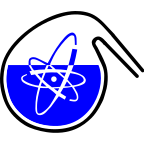Speaker
Description
Dissolution of corrosion layers is strongly connected with the problem of decontamination and decommissioning of nuclear facilities, which has become of the current issues in many countries. The key process to decontaminate metals, is to dissolve surface corrosion layer and remove radionuclides. From corrosion studies on the surface of stainless steel under primary circuit conditions of pressurized water reactors, can be concluded, that the dissolution of the corrosion layer is associated with the oxidation of insoluble built-in Cr3 + to soluble Cr6 +. Because of this fact, the experiments of dissolving corrosion layers started with dissolution of chromium (III) oxide.
The oxidation and dissolution of common corrosion layer compounds was investigated in acidic environment of HBF4 and H2SO4 at various concentrations and temperatures. As tested corrosion layer compounds, chromium (III) oxide, magnetite and several spinel minerals synthetized to substitute spinels created in primary circuit of nuclear power plant during the operation were used; the dissolved metals were measured by Atomic Absorption Spectroscopy and ICP-MS. The results show that it is possible to corrupt and dissolve highly stable corrosion layer compounds with elevated content of chromium.

